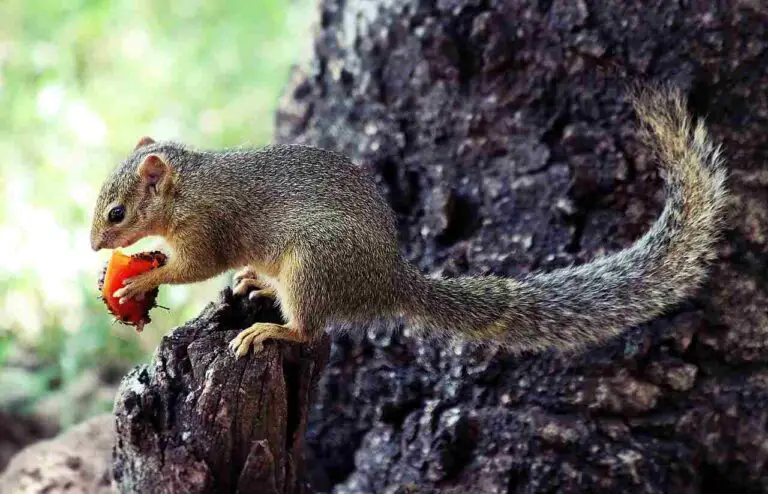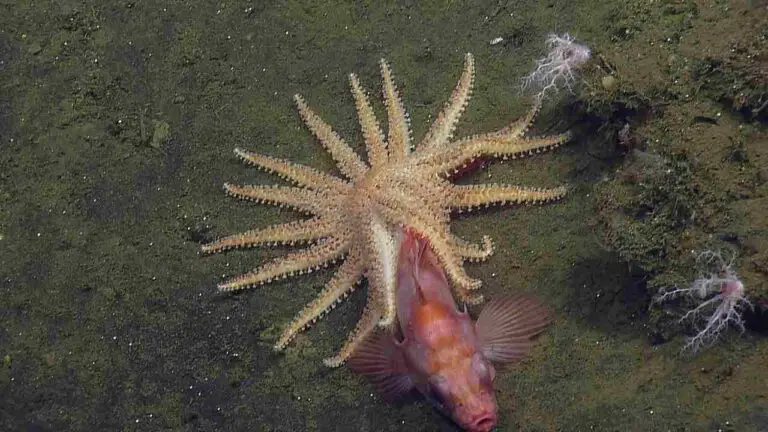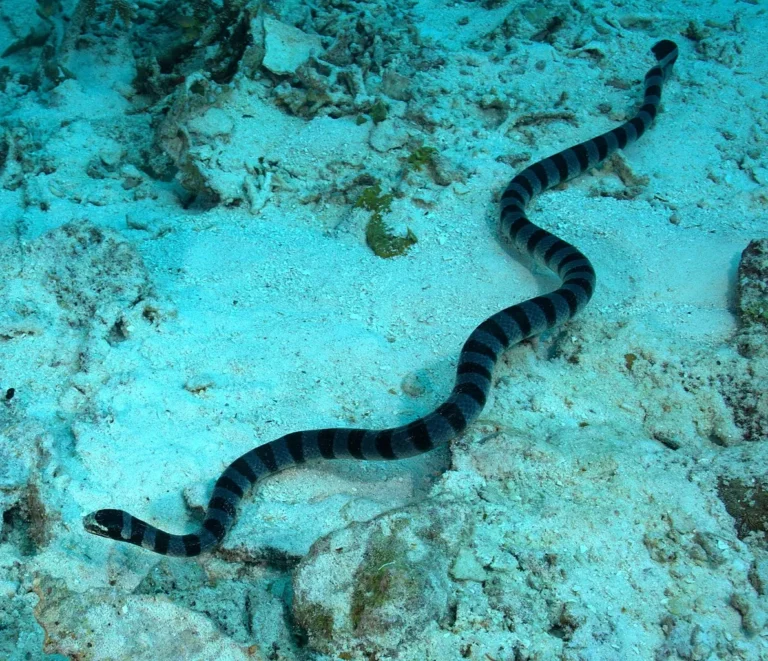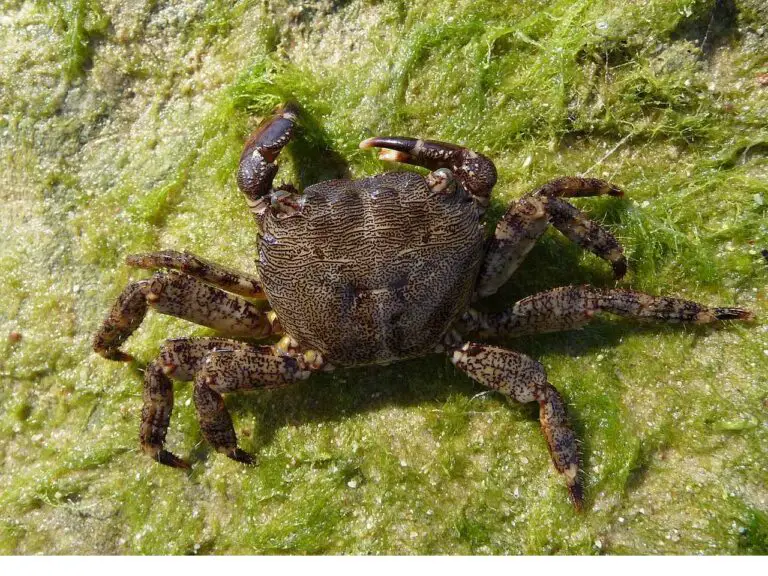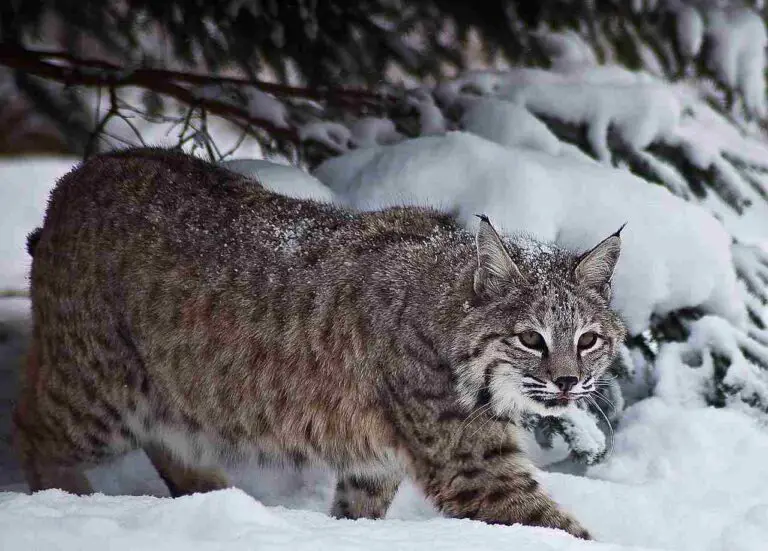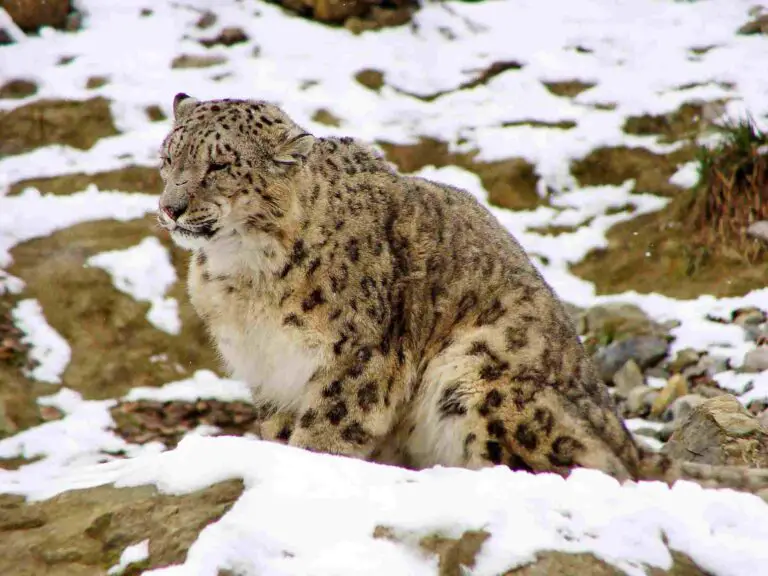What Eats Eagles? 13+ Predators of the Eagle Discussed
Animals that eat eagles include; hawks, owls, wolves, cougars, bears, snakes, bobcats, wolverines, snow leopards, crows vultures, and other eagles.
These animals range from relatively-small to large predators and scavengers, and may prey o eagles or consume their remains under different circumstances.
It must be noted that no animal eats eagles naturally as prey, because eagles are themselves apex predators in the ecosystem/food chain.
What Animal Eats Eagles?
1). Hawks
Hawks are one of the predators that can eat eagles, especially the larger species like the ferruginous hawk. While hawks are not generally larger predators than eagles, they can still pose a threat under certain conditions. Hawks primarily feed on smaller mammals, birds, and reptiles, but they have been known to target juvenile eagles and, in some cases, even adult eagles.
The relationship between hawks and eagles can occur in reverse as well, with eagles preying on hawks. This is more likely to happen when there is competition for resources or territory. Eagles are powerful birds of prey and have been observed hunting and killing hawks when necessary.
It’s important to note that hawks and eagles are both skilled hunters and have adapted to different hunting strategies and habitats. While hawks are known for their agility and speed, eagles rely on their strength and size to capture their prey. This difference in hunting techniques allows them to coexist in the same ecosystem without direct competition most of the time.
2). Owls
Owls, like the great horned owl, are known to be predators of eagles. They have the ability to kill and consume juvenile eagles, and there have been instances where adult eagles have fallen prey to owls as well. However, it’s important to note that owls do not primarily rely on eagles as their main source of prey. Their diet mainly consists of smaller mammals, birds, and reptiles.
The relationship between owls and eagles can also occur in reverse, with eagles preying on owls. This can happen when there is competition for resources or territory. Eagles, being powerful birds of prey, have been observed hunting and killing owls when necessary.
Owls and eagles have different hunting strategies and adapt to different habitats. Owls are known for their exceptional night vision and silent flight, which allows them to hunt effectively in the dark. On the other hand, eagles rely on their strength and size to capture their prey. These differences in hunting techniques enable owls and eagles to coexist in the same ecosystem without direct competition most of the time.
3). Wolves
Wolves are another predator that can pose a threat to eagles, although the chances of an eagle falling prey to a wolf are relatively low. While wolves are known to be opportunistic hunters and can ambush their prey at ground level, eagles are not their main target. Wolves primarily hunt ungulates such as deer, elk, and moose, which make up the majority of their diet.
In certain conditions, wolves may scavenge on eagle carcasses if they come across them. However, it’s important to note that eagles are not a significant part of their diet. Wolves are highly adaptable predators and have evolved to take down larger prey, which provides them with the necessary sustenance to survive.
Interestingly, the relationship between wolves and eagles can occur in reverse, with eagles preying on wolf cubs. This can happen when there is competition for resources or territory. Eagles, being powerful birds of prey, have been observed hunting and killing wolf cubs when necessary.
Wolves and eagles have different hunting strategies and occupy different niches within their ecosystems. Wolves are known for their pack hunting behavior and their ability to take down large prey. On the other hand, eagles rely on their aerial prowess and sharp talons to capture their prey. These differences in hunting techniques allow wolves and eagles to coexist without direct competition most of the time.
4). Cougars
Cougars, also known as mountain lions or pumas, are agile climbers and adept hunters. While they primarily prey on ungulates such as deer and elk, under certain conditions, cougars can capture eagles in trees. However, it’s important to note that eagles are not their main prey. Cougars have a diverse diet, and their main prey includes larger ungulates that provide them with the necessary sustenance to survive.
Cougars are solitary hunters and rely on stealth and ambush tactics to capture their prey. They are known for their ability to silently stalk and pounce on their unsuspecting victims. While eagles are not their primary target, cougars can take advantage of opportunities to capture them, especially if the eagles are young or vulnerable.
On the other hand, eagles have been observed preying on unprotected young cougars. This can occur when there is competition for resources or territory. Eagles, being powerful birds of prey, have the strength and agility to hunt and kill young cougars when necessary.
Cougars and eagles occupy different niches within their ecosystems. Cougars are terrestrial predators, while eagles rely on their aerial prowess to capture their prey. These differences in hunting techniques allow cougars and eagles to coexist without direct competition most of the time.
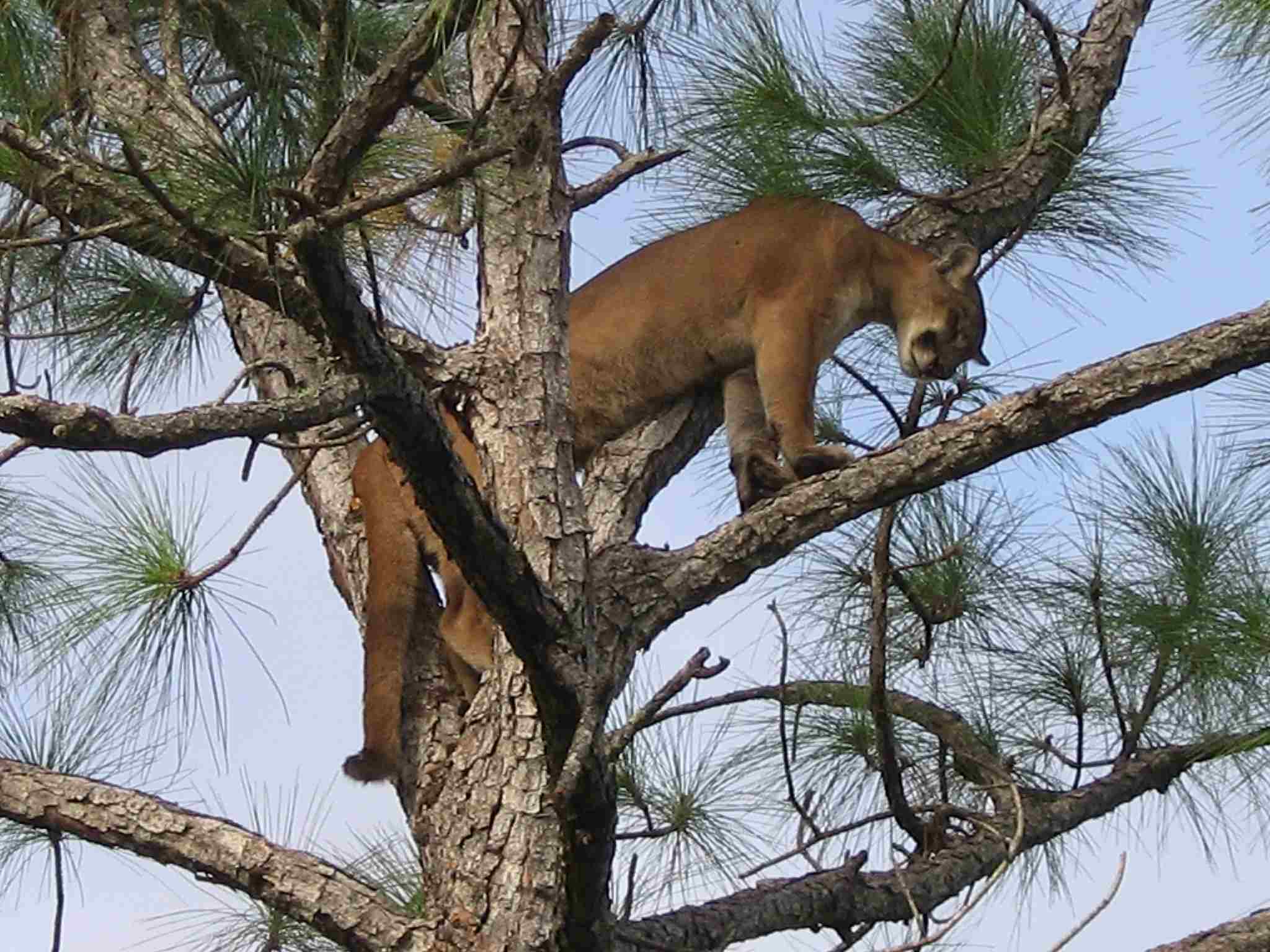
5). Bears
Bears are formidable predators that have the ability to eat eagles under certain conditions. While eagles are not their main prey, bears can take advantage of opportunities to capture and consume them. However, it’s important to note that bears primarily feed on a variety of other animals and plant matter.
Bears are omnivorous creatures, meaning they have a diverse diet that includes both meat and vegetation. Their main prey consists of fish, small mammals, and insects. They are also known to scavenge on carrion and feed on berries, nuts, and roots. Eagles are not a significant part of their diet, but if a bear comes across a vulnerable or injured eagle, it may seize the opportunity to consume it.
In some cases, bears may target eagle nests to feed on eggs or young chicks. This behavior is more common in areas where food sources are scarce or during times of food scarcity. Bears have a keen sense of smell and can detect the presence of a nest from a distance. They may climb trees or use their strength to access the nest and feed on the eggs or chicks.
It’s worth mentioning that eagles are powerful birds of prey and can defend themselves against potential predators, including bears. Adult eagles have sharp talons and a strong beak that they can use to fend off attacks. However, if a bear manages to surprise an eagle or catch it off guard, it may be able to overpower and consume it.
6). Snakes
Snakes are fascinating creatures that play a unique role in the ecosystem. While they are not the main predators of eagles, there are certain conditions under which snakes can prey on these majestic birds. Snakes come in a variety of species, including arboreal, venomous, and constrictors, each with its own hunting strategies.
Venomous snakes, such as the rattlesnake or the king cobra, have the ability to take down larger prey, including eagles, with their potent venom. However, it’s important to note that eagles are not their main prey. Snakes primarily feed on smaller animals like rodents, birds, and reptiles. Eagles may become targets if they happen to cross paths with a venomous snake and become vulnerable to an attack.
Constrictor snakes, like the boa constrictor or the python, are known for their ability to suffocate their prey. While eagles are not their main prey either, constrictors can overpower and consume them under certain circumstances. These snakes typically target smaller animals that they can easily subdue, but if an eagle is injured or weakened, it may become a potential meal for a constrictor.
It’s worth mentioning that the relationship between snakes and eagles can occur in reverse as well. Eagles are powerful birds of prey and have been known to prey on snakes. They have sharp talons and a strong beak that they can use to catch and kill snakes. This dynamic demonstrates the complexity of predator-prey relationships in nature.
7). Bobcats
Bobcats are stealthy and skilled hunters that inhabit various regions across North America. While they are not the main predators of eagles, there are certain conditions under which bobcats can prey on these majestic birds. Bobcats primarily feed on smaller mammals like rabbits, squirrels, and rodents, but they have been known to target larger prey, including eagles, under specific circumstances.
Although bobcats do not typically consider eagles as their main prey, they may opportunistically attack them if the opportunity arises. For example, if an eagle is injured, weakened, or unable to defend itself, it may become vulnerable to a bobcat’s ambush. Bobcats are agile climbers and can use their stealth and hunting skills to surprise and overpower their prey, including eagles.
It’s important to note that the relationship between bobcats and eagles can occur in reverse as well. Eagles are powerful birds of prey and have been known to prey on bobcat kittens. While bobcats are skilled hunters, their young are vulnerable and can fall victim to eagle attacks. This demonstrates the dynamic nature of predator-prey relationships in the natural world.
8). Wolverines
Wolverines are fascinating creatures that inhabit the northern regions of North America, Europe, and Asia. While they are not the main predators of eagles, there are certain conditions under which wolverines can prey on these majestic birds. Wolverines primarily feed on carrion, small mammals, and birds, but they have been known to target larger prey, including eagles, under specific circumstances.
Although wolverines do not typically consider eagles as their main prey, they may opportunistically attack them if the opportunity arises. For example, if an eagle is injured, weakened, or unable to defend itself, it may become vulnerable to a wolverine’s scavenging behavior. Wolverines are known for their strength and tenacity, and they can overpower their prey, including eagles, in such situations.
It’s important to note that the relationship between wolverines and eagles can occur in reverse as well. Eagles are powerful birds of prey and have been known to prey on wolverines, especially their young. While wolverines are formidable predators, their offspring are vulnerable and can fall victim to eagle attacks. This highlights the complex dynamics of predator-prey relationships in the natural world.
In addition to their occasional interactions with eagles, wolverines play a crucial role in the ecosystem as scavengers. They help to clean up carrion and prevent the spread of diseases. Wolverines are also known for their ability to traverse vast distances, making them important indicators of ecosystem health and connectivity.
9). Snow Leopards
Snow leopards are magnificent creatures that inhabit mountainous areas, particularly in Central and South Asia. While they are not the main predators of eagles, there are instances where snow leopards may interact with these majestic birds. Snow leopards sometimes live in close proximity to eagles, sharing the same habitat and occasionally crossing paths.
Although snow leopards do not primarily target eagles as their main prey, they can potentially prey on them under certain conditions. Snow leopards are opportunistic hunters and will take advantage of any available food source. If an eagle is injured, weakened, or unable to defend itself, it may become vulnerable to a snow leopard’s hunting behavior. In such cases, snow leopards can consider eagles as potential prey.
However, it’s important to note that eagles are not the main focus of snow leopards’ hunting efforts. Snow leopards primarily prey on animals such as ibex, argali sheep, and marmots, which are their main sources of sustenance. These large herbivores provide the necessary nutrition for snow leopards to thrive in their harsh mountainous environments.
The relationship between snow leopards and eagles is complex and multifaceted. While snow leopards may occasionally prey on eagles, they also play a crucial role in maintaining the balance of their ecosystem. As apex predators, snow leopards help regulate the populations of their prey species, ensuring the overall health and stability of the mountain ecosystem.
10). Crows
Crows, while unlikely to kill adult eagles, can pose a threat to young eagles. These intelligent birds are known for their opportunistic feeding habits and will not hesitate to prey on vulnerable eagle chicks. Young eagles that have not yet developed their full strength and flying abilities are particularly susceptible to crow predation.
Crows are also scavengers and will scavenge on eagle carcasses if given the opportunity. While they may not actively hunt adult eagles, they will take advantage of any available food source, including deceased eagles. In this way, crows can be considered as animals that eat eagles, albeit under specific conditions.
It’s important to note that crows are not the primary predators of eagles. They are more likely to target smaller prey or scavenge on carrion. However, in certain situations where young eagles are vulnerable or when there is a scarcity of other food sources, crows may resort to preying on eagles.
Crows are highly adaptable and can be found in various habitats, including forests, urban areas, and agricultural landscapes. Their ability to thrive in different environments increases the likelihood of interactions with eagles. While they may not pose a significant threat to adult eagles, their presence can still impact the survival of young eagles.
11). Vultures
Vultures play a unique role in the ecosystem as scavengers, and they are known to scavenge on carcasses, including those of eagles. While vultures are not typically considered predators of eagles, they can still feed on eagle carcasses under certain conditions.
As scavengers, vultures rely on their keen sense of smell to locate carrion, and they are attracted to the scent of decaying flesh. When an eagle dies or is killed, vultures can be quick to detect the presence of the carcass and gather in large numbers to feed. They have specialized adaptations, such as strong beaks and digestive systems, that allow them to consume and process carrion efficiently.
It’s important to note that vultures are not actively hunting or preying on live eagles. Instead, they take advantage of the opportunity to scavenge on eagle carcasses when they come across them. Vultures are particularly important in cleaning up the environment by consuming carrion and preventing the spread of diseases.
The presence of vultures can also have an impact on the behavior of eagles. The sight of vultures circling overhead or gathering around a carcass can signal the presence of food, attracting other scavengers and potentially leading to competition for resources.
12). Other Eagles
In addition to the predators mentioned earlier, there are instances where other eagle species can prey on smaller eagles. While this may seem surprising, it is not uncommon for larger eagle species or individuals to target smaller ones. However, it’s important to note that this is not their main prey, and they have a diverse diet that includes other animals.
Under certain conditions, such as scarcity of their usual prey or territorial disputes, larger eagle species may resort to preying on smaller eagles. This can occur when there is competition for resources or when the opportunity presents itself. However, it is important to understand that this behavior is not the norm and is more of an exception.
Eagles, including other species, have a wide range of prey items that they rely on for sustenance. Their main prey includes small mammals, fish, birds, and reptiles. These are the primary food sources that eagles actively hunt and rely on for their survival.
It’s worth mentioning that eagles are highly skilled hunters and have adaptations that make them formidable predators. Their sharp talons, powerful beaks, and keen eyesight enable them to capture and subdue their prey effectively. However, it is rare for eagles to target other eagles as their primary food source.
13). Raccoons
Raccoons are opportunistic predators that can pose a threat to eagles, particularly their young, known as eaglets, and their eggs. These clever and adaptable creatures have been known to raid eagle nests in search of an easy meal. Raccoons are skilled climbers, allowing them to access nests located high in trees or on cliffs. Once they reach the nest, they can feed on the vulnerable eaglets or consume the eggs.
Eaglets are particularly vulnerable to raccoon predation during their early stages of development when they are unable to defend themselves. Raccoons can easily overpower and consume these defenseless young birds. Additionally, raccoons have been observed stealing eggs from eagle nests, depriving the eagles of future offspring.
It’s important to note that raccoons are not the primary predators of eagles. They are opportunistic feeders that take advantage of available food sources, including eagle nests. Raccoons have a diverse diet that includes a variety of plant and animal matter, such as fruits, nuts, insects, small mammals, and birds. While they may occasionally target eagles and their young, it is not their main source of food.
Eagles, including their young, face numerous threats from a range of predators, and raccoons are just one of many potential dangers they must contend with. However, eagles have evolved various adaptations and behaviors to protect themselves and their nests from these threats. Their large size, powerful talons, and aerial agility help deter potential predators, including raccoons.
What Eats Eagles in the Food Chain?
In the food chain, eagles occupy the top position as apex predators. However, there are fellow top predators that can potentially prey on eagles, although it is not their natural behavior. These predators are tertiary and quaternary consumers, meaning they are higher up in the trophic level.
Tertiary consumers that may pose a threat to eagles include large hawks and constrictor snakes. These predators have the capability to overpower and consume eagles if certain constraints are present. For example, if an eagle is injured or weakened, it may become vulnerable to predation by these tertiary consumers.
Quaternary consumers, such as larger eagle species, bears, and cougars, are also high enough in the food chain to potentially prey on eagles. However, it is important to note that these predators would typically not target eagles as they are also apex predators. They would only do so under specific circumstances, such as scarcity of their usual prey or if the eagle is already weakened.
Habitat-based Analysis of Eagle Predation
*What Eats Eagles in the Rainforest?
Animals that can prey on eagles in the rainforest include larger eagles like harpy eagle, constrictors like emerald tree boa, climbing felines like puma and leopard, as well as owls and hawks.
1). Harpy Eagle
The Harpy Eagle is a formidable predator that can prey on smaller eagles in the forest. With its powerful talons and strong beak, it is well-equipped to take down its prey. This majestic bird is known for its large size and impressive wingspan, making it a potential predator of eagles in rainforests.
The Harpy Eagle is an apex predator in its habitat, and its diet consists mainly of mammals and birds. It is known to hunt monkeys, sloths, and other small mammals, as well as birds such as macaws and toucans. With its keen eyesight and agility, the Harpy Eagle can spot and capture its prey with precision.
In the rainforest, the Harpy Eagle is a top predator, playing a crucial role in maintaining the balance of the ecosystem. Its presence helps control the population of smaller eagles and other prey species, ensuring the survival of the fittest.
2). Emerald Tree Boa
Emerald Tree Boas have unique adaptations that allow them to ambush and constrict their prey, including eagles, in the dense canopy of the rainforest. With their vibrant green coloration and strong, muscular bodies, Emerald Tree Boas are well-equipped to blend in with their surroundings and capture unsuspecting prey.
These boas are skilled climbers, using their prehensile tails to navigate through the trees and strike at their prey from above. Once they have successfully captured their target, they use their powerful coils to constrict and suffocate their prey, ensuring a successful kill. Eagles, with their large size and powerful wings, may seem like formidable opponents, but even they are not immune to the stealth and strength of the Emerald Tree Boa.
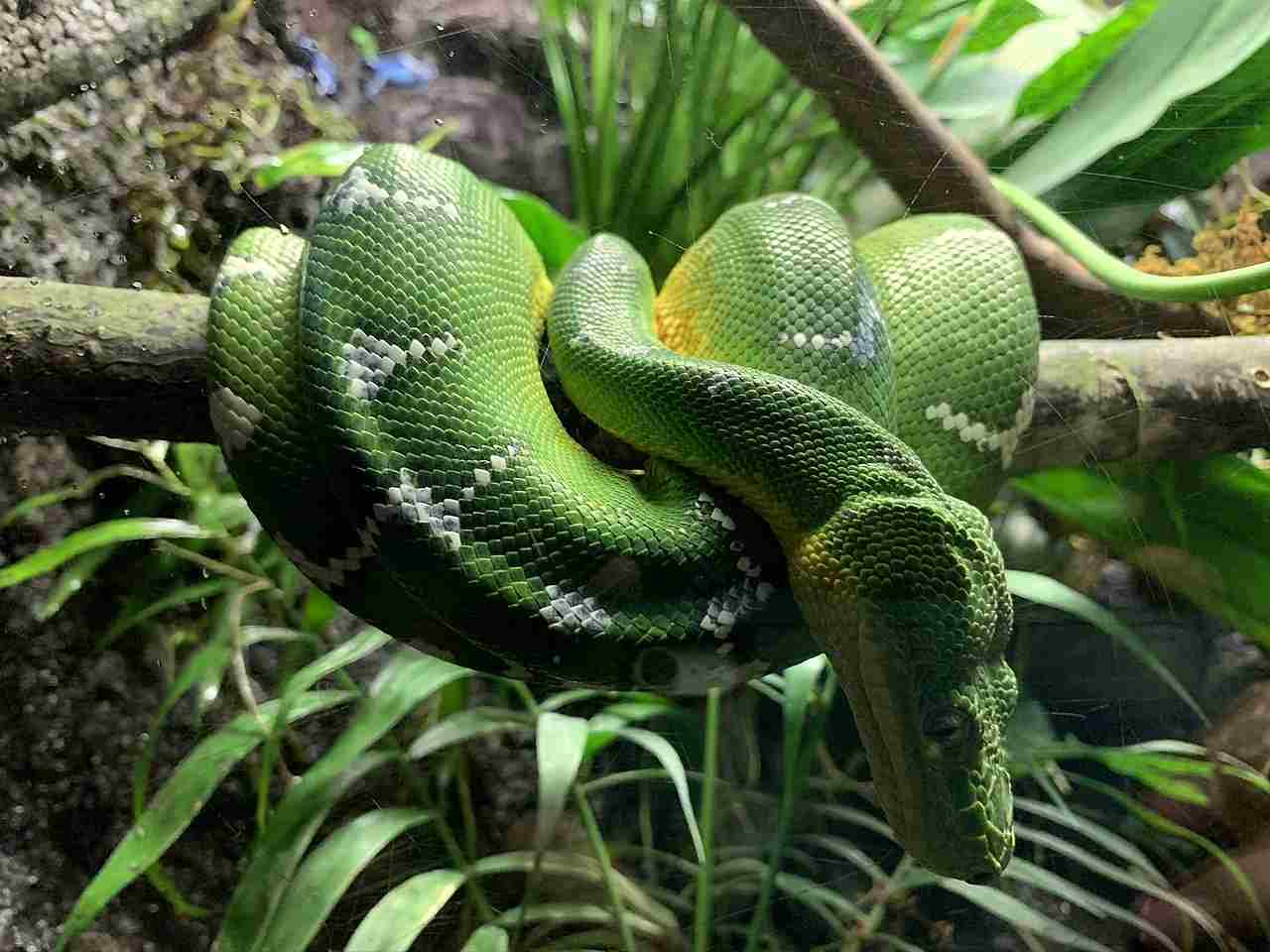
3). Leopard
Leopards are skilled climbers and are known to be potential predators of eagles in rainforests. With their powerful bodies and sharp claws, leopards are capable of scaling trees and ambushing their prey from above. Their agility and stealth make them formidable hunters, able to navigate through the dense canopy without alerting their target.
In rainforest ecosystems, leopards have been observed preying on various bird species, including eagles. They take advantage of their climbing abilities to surprise their prey and deliver a swift and lethal attack. Leopards are opportunistic hunters and will target any available food source, including eagles that may be nesting or perching in the trees.
Their ability to adapt to different environments and their versatility as hunters make leopards a significant threat to eagles in rainforest habitats.
4). Owls and Hawks
Owls and hawks are potential predators of eagles in rainforests. These birds of prey have the ability to hunt and capture young eagles, making them a significant threat to the eagle population. Owls, with their silent flight and exceptional night vision, are particularly skilled at ambushing their prey.
They can swoop down on unsuspecting eaglets and snatch them away before they even have a chance to react. Hawks, on the other hand, are known for their speed and agility, allowing them to chase down and capture young eagles in mid-air. Both owls and hawks are opportunistic hunters and will take advantage of any opportunity to feed on young eagles. Their presence in the rainforest ecosystem adds another layer of danger for the eagle population, as they are constantly on the lookout for potential prey.
*What Eats Eagles in the Desert?
Some animals that can prey on eagles in the desert are; cougars, bobcats, hawks, and vultures.
1). Cougar
Cougars, also known as mountain lions, are one of the predators that can prey on eagles in the desert. These powerful and stealthy big cats have the ability to ambush their prey, including eagles, with great precision. Cougars are skilled hunters and can take down animals larger than themselves, making them a formidable threat to eagles in the desert.
With their muscular bodies and sharp claws, cougars can climb trees and pounce on unsuspecting eagles from above. They are known for their agility and speed, which allows them to quickly close in on their prey. Cougars have a wide range of hunting techniques, including stalking and ambushing, making them highly effective predators.
2). Bobcat
Bobcats are another predator that can prey on eagles in the desert. These medium-sized wildcats are known for their agility and stealth, making them formidable hunters. With their sharp claws and keen eyesight, bobcats can silently stalk and ambush eagles, taking advantage of their smaller size and quick reflexes.
Bobcats are skilled climbers and can easily scale trees to reach eagle nests or perch on high vantage points to spot their prey. Their ability to blend into their surroundings with their camouflaged fur also gives them an advantage when hunting eagles. With their adaptability and hunting prowess, bobcats are a significant threat to eagles in the desert ecosystem.
3). Hawk
Hawks are another predator that can prey on eagles in the desert. These birds of prey are known for their sharp vision and agility, making them formidable hunters. With their powerful talons and beaks, hawks can swoop down on eagles from above, catching them off guard. Their ability to fly at high speeds allows them to chase and pursue eagles in the open desert landscape.
Hawks are opportunistic hunters and will take advantage of any chance to catch an eagle for a meal. With their hunting skills and adaptability, hawks pose a significant threat to eagles in the desert ecosystem.
4). Vulture
Vultures are another predator that can prey on eagles in the desert. These scavengers have a keen sense of smell and can detect the scent of a dead or injured eagle from miles away. Once they locate their prey, vultures will gather in large numbers to feed on the carcass. Their powerful beaks and strong digestive systems allow them to consume even the toughest parts of the eagle, such as bones and feathers.
Vultures play an important role in the ecosystem by cleaning up carrion and preventing the spread of disease. However, their scavenging behavior can also make them a threat to injured or weak eagles in the desert.
What Scavenger Eats Eagles?
Scavengers play a crucial role in the ecosystem by feeding on the remains of dead animals, including eagles. Vultures are one of the primary scavengers that feed on eagles after they have died. These birds have an exceptional sense of smell and can detect the scent of a dead or injured eagle from miles away. Once they locate the carcass, vultures gather in large numbers to feed on it. Their powerful beaks and strong digestive systems enable them to consume even the toughest parts of the eagle, such as bones and feathers.
Crows are another scavenger that may feed on dead eagles. These intelligent birds are opportunistic feeders and will take advantage of any available food source, including eagle carcasses. Red-tailed hawks, although primarily predators themselves, may also scavenge on dead eagles when the opportunity arises.
Raccoons and coyotes are known to scavenge on eagle carcasses as well. These adaptable mammals have a diverse diet and will consume a variety of food sources, including carrion. When an eagle dies, raccoons and coyotes may take advantage of the easy meal.
Interestingly, other eagles can also be scavengers of their own kind. In some cases, when an eagle dies, other eagles may feed on the carcass. This behavior is not uncommon among raptors and can be observed in various eagle species.
Conclusion
* In conclusion, this article has explored various predators and scavengers that pose a threat to eagles. From hawks and owls to wolves and cougars, there are several animals that actively hunt and prey on eagles. Additionally, there are scavengers like vultures, crows, raccoons, and coyotes that feed on eagle carcasses. Let’s summarize the key points discussed in each section.
* Hawks and owls are formidable predators that can take down eagles. Their agility, speed, and sharp talons make them formidable opponents. Wolves and cougars, on the other hand, are larger predators that may target eagles when they are vulnerable or injured.
* Bears, particularly grizzly bears, have been known to attack and kill eagles. These powerful creatures have the strength and size to overpower an eagle if they come into close proximity.
* Snakes, such as rattlesnakes and constrictors, may also pose a threat to eagles. While not a common predator, snakes can ambush and strike at eagles that venture too close to their territory.
* Bobcats and wolverines are opportunistic predators that may target eagles if given the chance. These elusive creatures have the ability to stalk and surprise their prey, making them a potential threat to eagles.
* Snow leopards, found in high-altitude regions, are skilled hunters that can take down eagles. Their stealth and agility allow them to navigate the rugged terrain and ambush their prey.
* Crows, known for their intelligence and adaptability, may scavenge on eagle carcasses. They are opportunistic feeders and will take advantage of any available food source, including dead eagles.
* Vultures, with their keen sense of smell, are primary scavengers that feed on eagle carcasses. They can detect the scent of a dead or injured eagle from miles away and gather in large numbers to feed on the remains.
* Raccoons and coyotes, being adaptable mammals, may scavenge on eagle carcasses as well. These opportunistic feeders will take advantage of an easy meal when an eagle dies.
* It is worth noting that other eagles can also be scavengers of their own kind. When an eagle dies, other eagles may feed on the carcass. This behavior is not uncommon among raptors and can be observed in various eagle species.
* Moving on to the habitat-based analysis of eagle predation, different environments present unique challenges and predators for eagles. In rainforests, the harpy eagle, emerald tree boa, leopard, and various owls and hawks can pose a threat to eagles.
* In desert regions, cougars, bobcats, hawks, and vultures are potential predators of eagles. These animals have adapted to the harsh desert conditions and have developed hunting strategies to survive.
* Eagles face a range of predators and scavengers in their natural habitats. From other birds of prey to mammals and reptiles, there are numerous animals that pose a threat to these majestic birds. Understanding the predators and scavengers of eagles is crucial for conservation efforts and ensuring the survival of these iconic creatures.
FAQs
1. What are the Predators of the Eagle?
Eagles, known for their majestic presence and powerful hunting skills, are not without their own predators. Several animals pose a threat to these magnificent birds of prey. Hawks, with their agility and speed, are one of the primary predators of eagles. Owls, with their silent flight and sharp talons, also pose a significant threat.
Other predators include wolves, cougars, bears, snakes, bobcats, wolverines, snow leopards, crows, vultures, and even other eagles. Raccoons, known for their opportunistic nature, are also known to prey on eagle eggs and nestlings.
While humans are not natural predators of eagles, habitat destruction and illegal hunting have posed significant threats to their populations. Understanding the predators of eagles is crucial for their conservation and protection in the wild.
2. Do Lions Eat Eagles?
Lions, including mountain lions, are not known to be natural predators of eagles. While lions are powerful hunters in their own right, they primarily prey on large ungulates such as zebras and wildebeests. Eagles, on the other hand, are birds of prey that primarily hunt small mammals, fish, and birds.
The habitats of lions and eagles also differ significantly, with lions inhabiting grasslands and savannas, while eagles are found in a variety of habitats including forests, mountains, and deserts.
It is important to note that eagles are not typically part of the lion’s diet due to their different hunting strategies and habitats. However, it is worth mentioning that eagles may occasionally scavenge on lion kills if the opportunity arises.
3. Do Snakes Eat Eagles?
Snakes are not typically known to be predators of eagles. While snakes are skilled hunters, their preferred prey consists of smaller animals such as rodents, birds, and amphibians. Eagles, on the other hand, are powerful birds of prey that primarily hunt small mammals, fish, and birds. The size difference between snakes and eagles makes it unlikely for snakes to successfully capture and consume an eagle.
Additionally, eagles are equipped with sharp talons and beaks that can defend them against potential snake attacks. Therefore, it is rare for snakes to eat eagles in their natural habitats. Instead, snakes and eagles tend to occupy different ecological niches and have different prey preferences.
4. What Eats Eagles and Hawks?
Eagles and hawks are both formidable birds of prey, but they are not without their own predators. Some of the main predators of eagles and hawks include felines, canines, and snakes.
Felines such as cougars and bobcats are known to occasionally prey on eagles and hawks. These stealthy predators can take advantage of the birds’ vulnerability during hunting or nesting activities. Canines, such as wolves and coyotes, are also known to pose a threat to eagles and hawks, especially when they are young or injured.
Snakes, although not commonly associated with hunting birds of prey, can occasionally prey on eagles and hawks. However, this is more likely to happen with smaller species of snakes, as larger snakes would struggle to overpower these powerful birds.
5. What do Eagles Eat?
Eagles are known for their impressive hunting skills and diverse diet. So, what do eagles eat? Eagles primarily feed on various prey and carrion. Their diet includes fish, small mammals like rabbits and squirrels, birds, reptiles, and even larger prey like deer and goats.
Eagles are opportunistic hunters and will take advantage of any available food source. They are also known to scavenge on carrion, feeding on the remains of dead animals.
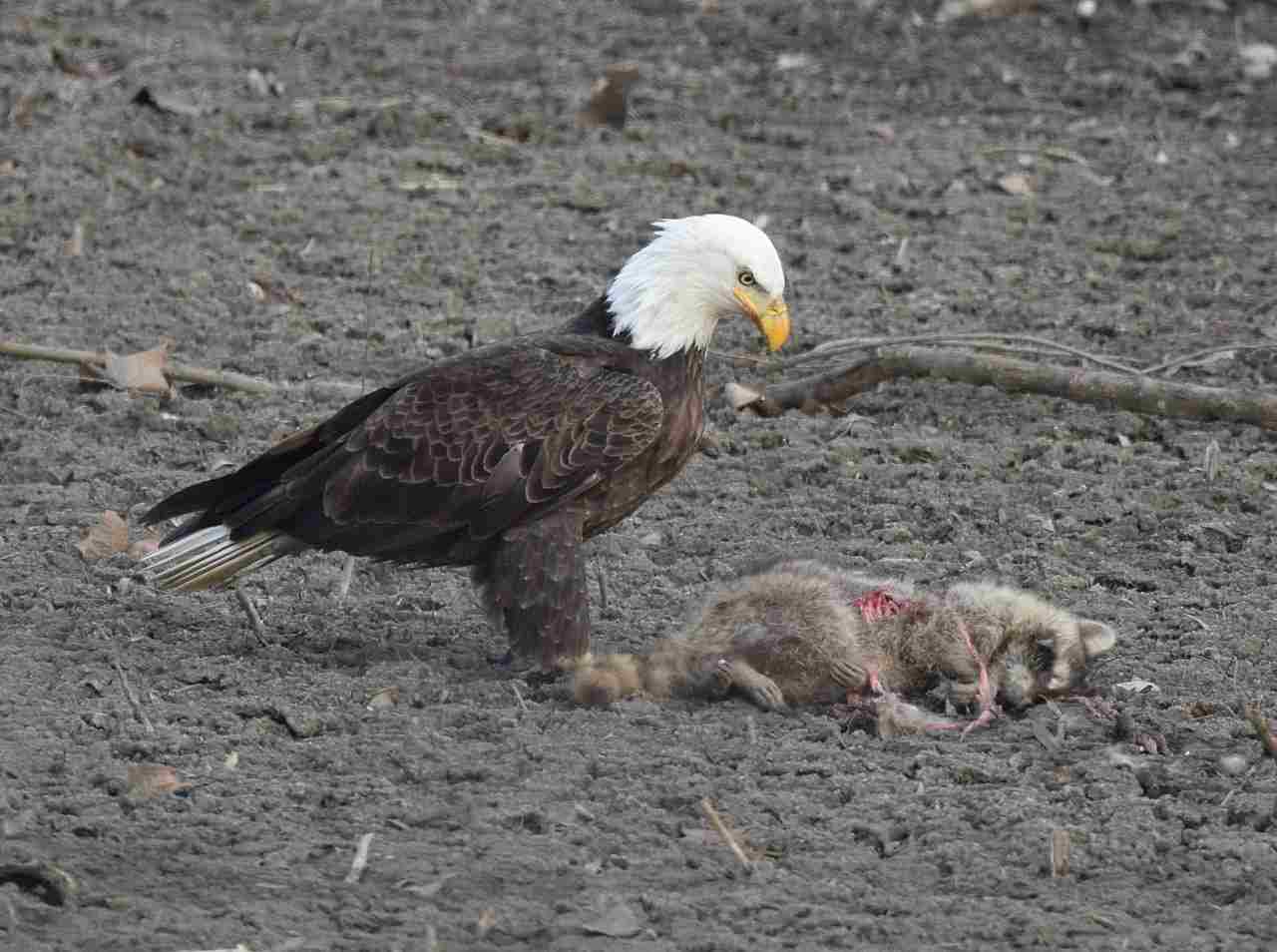
6. What Hunts Down Eagles?
One of the main predators of eagles is the larger species of hawks, such as the red-tailed hawk and the goshawk. These hawks are known for their agility and strength, making them formidable opponents for eagles.
Additionally, other birds of prey like owls can also pose a threat to eagles, especially during nesting season when they may target eagle chicks. It’s important to note that while eagles may face predation from these species, they are still considered apex predators in their ecosystems due to their hunting prowess and ability to defend themselves.
7. Do Bears Eat Eagles?
Yes, bears can eat eagles. Bears are opportunistic omnivores and have been known to scavenge on eagle carcasses. However, it is important to note that bears are not typically active predators of eagles.
They are more likely to feed on eagle eggs or young chicks if they come across them. Bears are attracted to the scent of a carcass and may consume an eagle that has already died from other causes.
8. What Eats Golden Eagles?
Golden eagles are apex predators and have few natural predators themselves. However, there are a few species that are known to prey on golden eagles. One of the main predators of golden eagles is the gray wolf. Wolves are highly skilled hunters and have been observed hunting and killing golden eagles in certain regions. Another predator of golden eagles is the Eurasian eagle-owl. These large owls have been known to attack and kill golden eagles, especially during the breeding season when the eagles are more vulnerable.
In addition to these predators, other large raptors such as the white-tailed eagle and the peregrine falcon have been known to prey on golden eagles. These birds of prey are powerful and agile hunters, capable of taking down even the largest eagles. It is important to note that while these predators may occasionally prey on golden eagles, they are not their primary food source. Golden eagles primarily feed on small to medium-sized mammals, birds, and reptiles.
9. Do Raccoons Eat Eagles?
Raccoons are opportunistic feeders and have a diverse diet that includes both plant and animal matter. While raccoons are known to scavenge on carrion, there is little evidence to suggest that they actively hunt and eat eagles.
Eagles are large and powerful birds of prey, and raccoons are not equipped to take down such formidable predators. Raccoons are more likely to target smaller prey such as rodents, fish, and insects. Therefore, it is unlikely that raccoons eat eagles on any frequent basis.
10. Do Humans Eat Eagles?
Humans do not usually eat eagles. While there may be isolated cases of humans consuming eagles, it is not a common practice. Eagles are protected species in many countries, and hunting or consuming them is illegal. Additionally, eagles are large birds of prey with strong beaks and talons, making them difficult to handle and prepare for consumption.
Humans typically do not have the necessary tools or expertise to catch and process eagles for food. Therefore, it can be concluded that humans do not commonly eat eagles.
11. What do Eagles Get Eaten by?
Eagles can be eaten by a variety of predators in the wild. One of the main predators of eagles is other raptors, such as hawks and owls. These birds of prey are known to compete with eagles for food and territory, and they may attack and kill eagles if given the opportunity.
Additionally, larger predators like wolves, cougars, and bears have been known to prey on eagles, especially when they are vulnerable or injured.
12. What is the Natural Enemy of the Eagle?
Other raptors like hawks and owls are the natural enemies of the eagle. These birds of prey pose a threat to eagles because they compete for food and territory. Hawks and owls may attack and kill eagles if given the opportunity.
